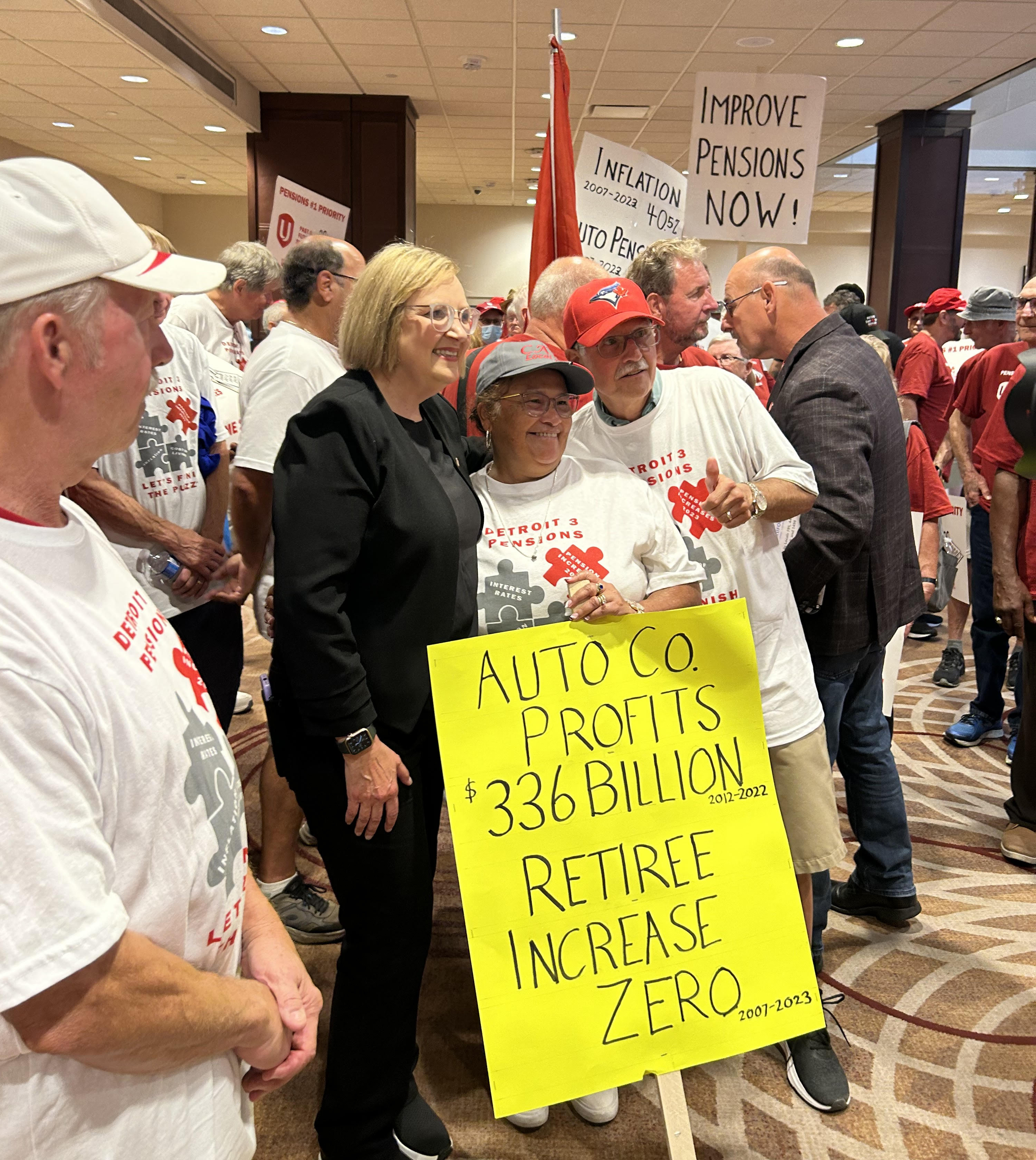Dianne Feeley
Posted April 10, 2025

THE UAW STATEMENT “In a Victory for Autoworkers, Auto Tariffs Mark the Beginning of the End of NAFTA and the ‘Free Trade’ Disaster” posted on the UAW website, presents a faulty understanding of the impact NAFTA had on the restructuring of the auto industry. It then outlines a disastrous strategy for auto workers, similar to a previous UAW administration’s call on members to save their jobs by voting for two-tier contracts.
In the 1990s corporate restructuring meant increased automation, selling off auto parts plants and opening up plants in states that successfully walled off union organizing. Instead of using its muscle, the union leadership sold the membership on the need to find concessions that limited the pain. That meant voting for half wages, inferior working conditions and fewer benefits, not for ourselves but for the next generation.
Told this was the way to keep one’s job, even those who voted for two-tier chafed against what they saw as obvious inequality. Over the next several contracts, members raised ending tiers as a central contract demand. And because cutting health care and pension benefits was so profitable, corporations eventually restored the wage rate — while stonewalling on benefits.
Faulty Analysis
The UAW March 27, 2025 “Victory” statement identifies a two-million-unit-per-year decline in Big Three production as the result of increased integration of the North American auto industry.
It cites NAFTA as growing corporate profits while U.S. autoworkers were laid off, but ignores the other factors — multi-tier wages, increased automation, and the reorganization of the auto parts sector.
The statement also ignores the existence of foreign-owned companies that set up their plants in “right-to-work” Southern states, cutting into what was once mainly the Big Three market. This combination means that today only 40% of U.S. auto workers are covered by union contracts.
Although the UAW statement demands that companies not be allowed to close factories, that seems to mean only U.S.-based plants. And while it demands a North American minimum wage and greater labor rights for Mexican autoworkers, it offers no innovative solutions on how this could be accomplished.
The USCMA agreement replacing NAFTA —negotiated during the first Trump administration — has proven toothless. It contained a minimum wage law and established a Rapid Response Mechanism (RRM). This investigative and enforcement mechanism was to ensure workers’ rights to unionize and negotiate contracts.
But even when auto workers voted and won an independent union (twice) at VU Manufacturing — a Michigan-based interior auto parts company that operated a plant of 400 on the Mexican side of the border — the company retaliated and eventually closed down. It ignored the RRM, stiffed the final 71 workers of their severance and made sure the workers were blacklisted.
What Strategy?
Union contracts are only enforceable when backed by the active participation of the workforce. Trade agreements are similar.
How has the UAW worked with unions in Canada and Mexico to enforce USCMA? Dead silence. Instead, the go-it-alone UAW statement endorsed the Trump administration’s slapping 25% tariffs on parts and fully assembled vehicles coming from Canada and Mexico. Since then Stellantis has implemented layoffs of auto workers in all three countries. And while the longer-term impact of North American auto tariffs is unpredictable, clearly they will quickly result in higher prices and job losses.
Until 1984 Canadian and U.S. autoworkers belonged to the UAW on both sides of the border. But when the UAW leadership advocated concessions, Canadian workers refused to go along.
Given what happened then, UAW members should look at the big picture. And since Trump just blatantly annulled the contracts and bargaining rights of federal workers, falsely claiming that “national security” requires it, isn’t it absurd to imagine that Trump cares about workers’ lives?
In the era of Artificial Intelligence and climate catastrophes, why count on a stagnant market of individual car and truck production? Why not transition to a sustainable mass transit system and demand the work/life balance we need? It’s time to reduce the work day, re-raising the old UAW demand of “30 hours work for 40 hours pay.”
Instead of viewing Mexican and Canadian autoworkers as competitors, we need to unite with all who produce and distribute what we make. Instead of surrendering our union’s potential power, we need to forge a powerful unity beyond borders — and across manufacturing industries.
An integrated North American auto industry suggests that workers can carry out effective slowdowns and strikes to equalize wages and working conditions — not simply set minimal standards.
This means organizing workers — often employed by the same company — across borders. We must remove labor costs from business calculations by eliminating competition between workers. In today’s corporate climate, cross-border worker mobilization is an essential tool.
Another UAW member speaks up:
“Viewpoint: Will Trump’s Tariffs Be Good for Auto Workers?” by Sean Crawford, Labor Notes, April 2, 2025
Also see Promise Li’s “Labor Has a China Problem—but Not the One You Think,” in The Nation, April 17, 2025
May-June 2025, ATC 236




Leave a Reply